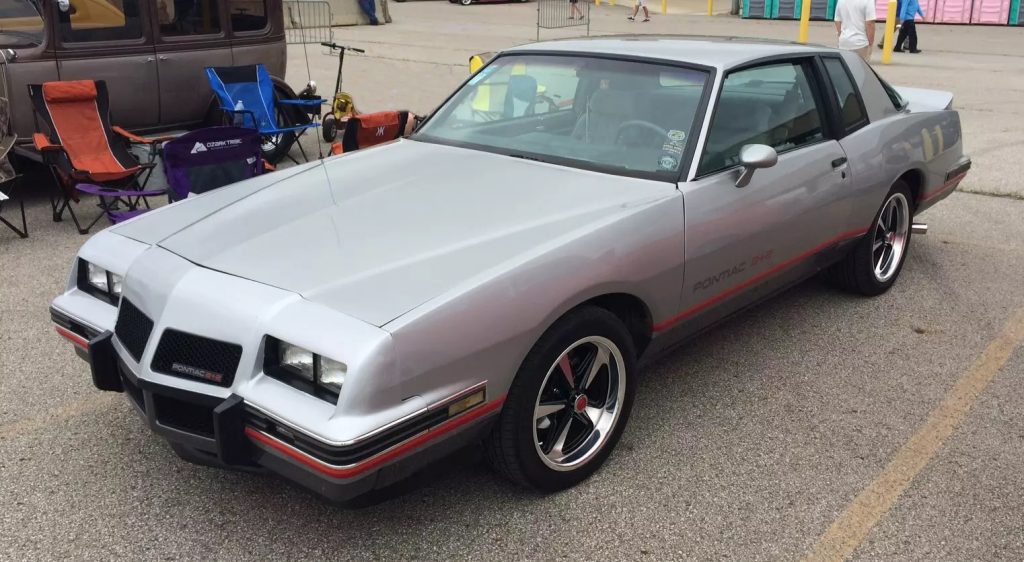Groundhog Day is celebrated every year on February 2. But no offense to meteorologically-minded rodents, we’re thinking about establishing an alternative holiday: Pontiac 2+2 Day.
Are you listening Hallmark?
And to kick off the celebration, let’s talk about an oft-overlooked flavor of the once-ubiquitous GM G-body, the Pontiac Grand Prix 2+2.

For starters, the 2+2 name wasn’t new. Pontiac had been using it to denote performance variants of its full-size Catalina as far back as 1964. The designation was borrowed from European automakers, who had used 2+2 to describe a two front/two back seating arrangement on coupes.

After its heydey in the 1960s, Pontiac shelved the 2+2 until the mid-1980s, when it needed a name for its new, limited-run G-body Grand Prix variant designed for NASCAR. (Chevy was simultaneously developing the Monte Carlo SS Aerocoupe for the exact same reason.)

Up front, the 2+2 wears a unique urethane nose that’s completely different from its Grand Prix stablemates. Move around back and the party starts to get really interesting with its large, sloping rear backglass—a design tweak that helped improve the 2+2’s aerodynamic profile on NASCAR Super Speedways. (The Monte Carlo SS Aerocoupe shared a similar, albeit distinct rear window.)

But before Pontiac could use them in competition, the car needed to be homologated first. In other words, Pontiac had to build a certain number of 2+2 models for sale to the public, in order to get the car onto NASCAR tracks.
So it did, cranking out around 1,200 Grand Prix 2+2 models, exclusively for the 1986 model year.
(Conversely, Chevy made its Monte Carlo Aerocoupes from 1986 to 1987, with a total production surpassing 6,000 cars. So relatively speaking, the Monte Carlo Aerocoupe is more common, though they’re both still pretty rare.)
Fun Fact: Pontiac never referred to the 2+2 as an Aerocoupe; that name was reserved exclusively for the Chevy Monte Carlo SS variant.

In addition to the aerodynamic updates fore and aft, showroom-bound Pontiac 2+2 models got 15 inch Pontiac-styled Rally wheels. Under the hood was a mandatory 305ci small block Chevy V8, good for about 165 horsepower, mated to a 200-4R automatic. Curiously, GM’s more potent, 190 hp “H.O.” 305ci V8 was not an option in the 2+2, though it was available in the Firebird.
Into Grand Prixs…errr….Grand Prixes…err…well, whatever, you’ll probably enjoy this story too: This 1969 Pontiac Grand Prix SJ has a Factory 4-Speed Manual

Much like the Daytona/Superbird twins of the late 1960s, Pontiac’s NASCAR homologation special was not a hot seller. The polarizing front end and mail-slot rear trunk likely put-off potential buyers, as did the 2+2’s 20 percent price bump over a typical Grand Prix.
Suffice it to say, these 1986-only Grand Prix 2+2 coupes a rare sight today.
All the more reason to make February 2 National Pontiac 2+2 Day—so, who’s with us?

…Seriously, let’s make this a thing. (Image/OnAllCylinders)
***
If you dig rare GM G-bodies, you’ll enjoy this one too: We Hopped in a Buick Grand National to Search for an Ultra-Rare GNX

Great car even the Buick grand national 85,86,87,etc but thank you ✌️